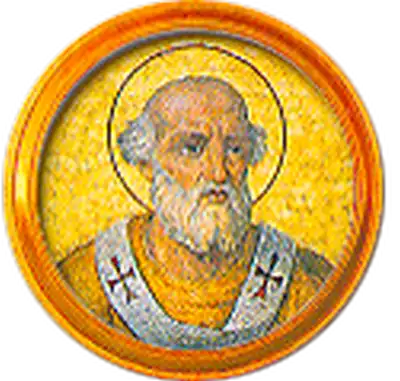
John I, whose pontificate began in 526 AD, marks a significant era in the history of the Catholic Church as the first new Bishop of Rome in over half a century, following the death of Pope Symmachus. Born in Tuscany, Italy (birth date unknown) and departing this life on 18 May 526, John I’s ascension to papacy came at a time of great political and religious upheaval. His tenure, albeit brief, was notable for the challenges he faced within the shifting sands of the Byzantine and Ostrogothic realms.
The Historical Context of John I’s Papacy
John I’s election as the Bishop of Rome occurred during a period characterized by significant political and religious turmoil. The end of Pope Symmachus’s lengthy papacy, lasting from 498 to 514, had left a void that was felt deeply within the Church’s hierarchy. The subsequent short reigns of his successors, Pope Hormisdas and Pope Felix IV, further underscored the instability of the era.
John I’s papacy began against this backdrop of change. The Byzantine Empire, under the reign of Emperor Justin I, was exerting its influence in the West, particularly in religious matters. This geopolitical scenario played a critical role in John I’s papal policies and decisions.
As Bishop of Rome, John I navigated these complexities with a focus on maintaining the Church’s autonomy while also seeking to establish harmonious relations with the Byzantine Empire. His efforts were aimed at balancing the traditional authority of the papacy with the emerging political realities of his time.
The keyphrase “John I becomes first new Bishop of Rome in over 50 years after death of Symmachus” emphasizes this transition and highlights the historical significance of his papacy. John I’s tenure, though marked by challenges, was a pivotal moment in the history of the Catholic Church, setting a precedent for the relationship between the Church and the state in the years to come.
Diplomatic Challenges and Achievements
John I’s tenure as Bishop of Rome was predominantly marked by his diplomatic endeavors, particularly with the Ostrogoths and the Byzantine Empire. His papacy coincided with the reign of Theodoric the Great, the Ostrogothic king of Italy, a period fraught with religious and political tension. Theodoric, an Arian Christian, exerted considerable influence over the religious affairs in his realm, often clashing with the orthodox beliefs of the Roman Church. John I, in his role as Bishop of Rome, was instrumental in navigating these delicate religious and political landscapes.
In 525 AD, John I was compelled to embark on a significant diplomatic mission to Constantinople, ordered by Theodoric. This mission, primarily aimed at negotiating with Emperor Justin I regarding the treatment of Arians in the Byzantine Empire, was a testament to John I’s diplomatic acumen. His successful negotiations not only elevated his status as a skilled diplomat but also underscored the growing political influence of the papacy.
Despite his achievements, John I’s papacy was not without controversy. His return from Constantinople was met with suspicion by Theodoric, who perceived John I’s enhanced relations with the Byzantine Empire as a threat. This suspicion led to John I’s eventual imprisonment, contributing to his demise and martyrdom.
John I’s papacy, though brief, was a period of significant transition for the Catholic Church. His role in bridging the gap between Arian and Orthodox Christians, his diplomatic missions, and his efforts to maintain the Church’s autonomy amidst political upheavals, were pivotal in shaping the Church’s future trajectory. The legacy of John I as Bishop of Rome thus lies in his adept handling of the complex interplay between religion and politics of his time.
References
- Herrin, Judith. The Formation of Christendom. Princeton University Press, 1987.
- Noble, Thomas F.X. The Republic of St. Peter: The Birth of the Papal State, 680-825. University of Pennsylvania Press, 1984.
- Richards, Jeffrey. The Popes and the Papacy in the Early Middle Ages, 476-752. Routledge, 1979.
- Vatican. “Pope John I.” Vatican.va. Accessed on January 1, 2024.
